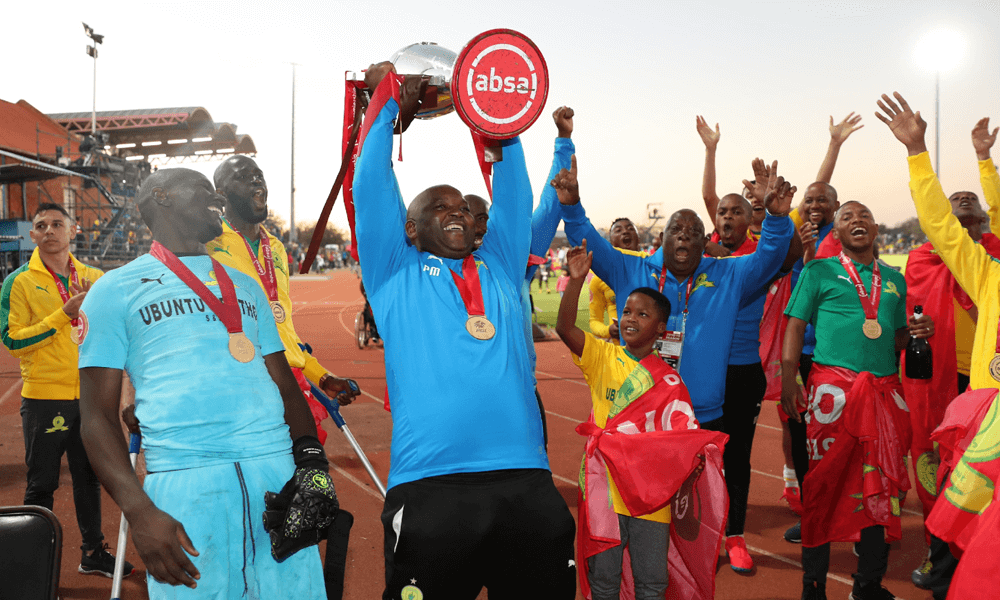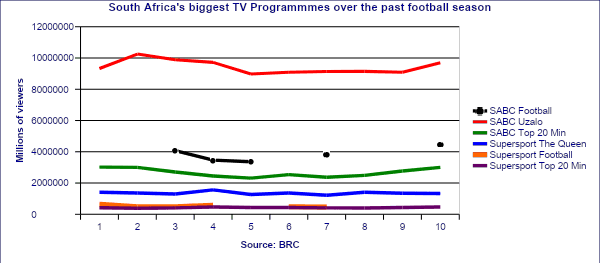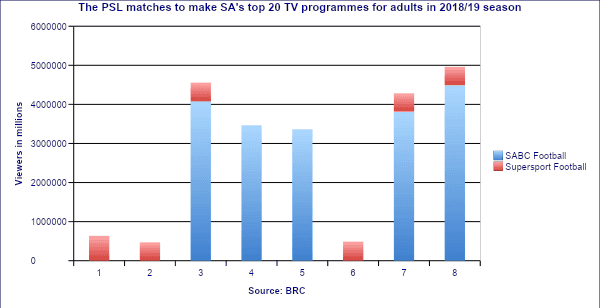
To say I was shocked to the core to see the statement by the Premier Soccer League (PSL) on the eve of the start of the 2019/20 league season that they had just learned that SABC, by far its biggest single broadcaster by audiences was not going to be broadcasting matches because they had not reached an agreement with Supersport, the lead broadcast rights holder. In my head I could not imagine how something like this could happen given how important both these partners are to the league. As the rights owner, whose product this is, why did they not know such a massive issue much earlier? Anyway a lot of the conversation has taken place since and at the time of penning this it’s not clear whether a solution is imminent though a lot of behind the scenes shuffling is taking place. Whether or nor that solution is found it will not deal with inherent challenges facing the game as spectator sport and a TV product.
At the heart of the crisis is battle for audiences in which the PSL is probably not doing as well as they could. The graph below (Chart 1) shows what the PSL is up against. The broadcaster wants content that is engaging, delivers loyal audiences and consistently. Football must deliver better revenue generating opportunities for the broadcaster than the available alternatives. For SABC 1 the biggest driver of audiences are soapies. Uzalo (red line in the graph below), which delivers 9m plus viewers consistently and Generations, which is not far off at over 8m viewers consistently. BRC, the broadcaster research council publishes monthly list of top TV programmes by broadcaster. On SABC 1 football barely gets into that top 20 list. The average audience you need to get to be in the top 20 on SABC 1 (green line in the graph below) is approximately 3m viewers. The PSL matches (black line, dots) only delivered 5 matches all season that made the SABC 1 top 20 programmes. Put differently the top 20 is the goose that lays the golden egg the cash cows for the broadcaster and football is no longer making that list regularly enough. It is a painful fact but it is a fact. PSL and its leadership must work much harder to get football back on the most sought after programmes on TV because at this very moment it is not. If I was the SABC and I have 1 billion rand to spend on content I am probably spending that on my top 20 programs because that is what delivers the best commercial returns.
Incidentally for Multichoice (blue line) its “The Queen” soapie with a consistent audience of 1.2m a show that delivers the best audiences and while football (orange line) fares slightly better here, also generally barely makes the top 20 lists whose monthly minimum audience (purple line) is about 400k viewers.

Chart 1
The graph below shows a figure that must trouble the Parktown suits. At no stage in the entire season has the audience combined top 5m primary viewers per match. Only 5 matches the three derbies Orlando Pirates (OP) and Kaizer Chiefs (KC), the Nedbank and Telkom Cup Finals as also made the lists. One other league match AmaZulu (AZ) and Golden Arrows (GA) on SABC and 6 on Supersport made their respective broadcaster top 20 list. If it is true that SABC was offered 140 games for R280m and I assume that is rights fee before one adds the production costs. Nonetheless works out to be R1.94m plus production plus slot costs a match. That is what the SABC must then commercialise. A top program in SABC could generate anything R2.5m and R4.5m a show that is 30 minutes episode. So if SABC 1 is to schedule midweek football match it’s probably giving up R10m of revenue for that 2-hour slot. Can football deliver that revenue is the hard-core commercial decision they have to make. I am not sure it can, in the current package structure i.e. based on what it can get from license fees, advertising and sponsorships. Unless one understands these numbers and commercial realities it’s difficult and irresponsible to blame SABC for holding for a better deal. On the surface it would seem that recouping that level of investment given how football has performed relative to other programmes would be tough. It probably needs these matches to be delivering consistently audiences at 7 – 8 million viewers per match and that’s not impossible to achieve. Football has been there before and can get back there with better rights structuring, planning and a bit of luck. Currently, however, they barely get that with biggest game of our football calendar. Supersport on the other hand has a fairly guaranteed subscription fee plus advertising income to call on. The numbers are still tough for them it would seem but their commercial model can stomach this.

Chart 2
Does this mean football is necessarily in trouble? It depends on what football does. This indeed is a serious issue for the PSL and the game as a whole. Anyone suggesting otherwise is either being untruthful, naïve or lacks the understanding of what is at play here. The one thing that is quite clear and has been for a while is that it’s the PSL that must manage the content rights and its distribution. To effectively subcontract that role like they inadvertently have was always going to lead to this. And in truth the warning bells have been ringing for a while. It is possible to work with its entire broadcaster panel and ensure it maximizes the opportunity for its partners to commercialize these rights in a strategic and sustainable manner. It has been done before, it can be done and it must be done. It is the PSL whose product must reach maximum available market and to leave that to its main broadcaster is, shall we say, strange. The SABC is a big part of the commercial value of these rights. No rights-holder can afford to sit by when 90% of its consumers cannot access its product.
The landscape has changed football remains the single biggest sport by interest and affinity but the rights holders must realise the landscape has changed and work much harder than they ever have to ensure this remains so. The evidence above suggests football is loosing ground in the battle for audiences and thus commercial share of the cake. It is up to football to reclaim lost ground.